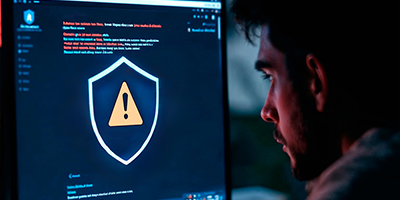New members: Get your first 7 days of ITTutorPro Premium for free! Join for free No credit card required.
New members: Get your first 7 days of ITTutorPro Premium for free! Join for free No credit card required.
Platform engineering is reshaping DevOps by streamlining developer workflows and boosting scalability.…
Stay ahead in 2025’s evolving threat landscape with cutting-edge cybersecurity strategies. Defend…
In the data-driven age, two critical roles have emerged—Data Engineers and Data…
🚀 Introduction: Martech in the Age of Automation, AI & Personalization The…

In today’s hyperconnected world, the cyber threat landscape is evolving at an unprecedented pace. As businesses continue to digitize operations and rely on cloud infrastructure, AI, and remote work models, attackers are becoming more sophisticated, organized, and well-funded.
2025 promises both new opportunities and heightened risks. To stay ahead, organizations must understand the security trends shaping the year ahead—and build proactive, adaptive strategies to defend against them.
Let’s explore the key cybersecurity trends and threat vectors forecasted for 2025.
Artificial Intelligence is a double-edged sword. While it’s revolutionizing cybersecurity defenses (e.g., threat detection, behavior analytics), it’s also empowering attackers.
In 2025, expect to see:
Takeaway: Organizations must leverage AI not just for efficiency, but to detect AI-driven threats in real-time.
The “never trust, always verify” model of Zero Trust is no longer optional—it’s becoming the default strategy for modern enterprises.
By 2025:
Takeaway: Enterprises must move beyond perimeter defense and enforce granular, context-aware security policies.
Ransomware continues to dominate headlines—and it’s evolving as a service-based business model.
In 2025, we’ll see:
Takeaway: A solid incident response plan, frequent backups, and employee awareness are critical to mitigating ransomware risks.
Biometrics (face, fingerprint, iris, voice) are becoming standard for authentication. However, they also raise serious privacy and ethical concerns.
Emerging issues include:
Takeaway: Biometrics should be used with multi-factor authentication (MFA) and backed by strict data governance.
As more devices connect to the internet—from smart homes to factory floors—attackers are exploiting insecure endpoints.
In 2025:
Takeaway: Organizations must inventory, segment, and monitor all connected devices while ensuring firmware is regularly updated.
Despite growing demand, the cybersecurity workforce is struggling to keep up. The skills shortage is now a top risk in itself.
Expect to see:
Takeaway: Human capital is a critical part of the cybersecurity equation—organizations must prioritize recruitment, training, and retention.
With mobile devices being primary work tools in 2025, attackers are targeting them more than ever.
Threats include:
Takeaway: Businesses must implement mobile device management (MDM) and enforce strong BYOD policies to safeguard mobile endpoints.
Global regulators are catching up with evolving threats. In 2025, new laws and frameworks will emerge to enforce stronger digital practices.
Notable trends:
Takeaway: Compliance is no longer just legal—it’s strategic. Organizations need flexible governance frameworks to stay audit-ready.
Cybercriminals are increasingly targeting third-party vendors to breach high-value targets.
Supply chain risks in 2025 will involve:
Takeaway: Vetting vendors, conducting regular risk assessments, and limiting third-party access is essential for supply chain security.
Finally, 2025 marks the shift from pure cybersecurity to cyber resilience—the ability to anticipate, withstand, and recover from attacks.
Key practices include:
Takeaway: Cyber resilience isn’t just an IT concern—it’s a boardroom issue.
The evolving threat landscape of 2025 demands more than just reactive measures. It requires strategic foresight, cutting-edge tools, and a security-first culture at every level of the organization.
From AI-driven threats and Zero Trust architecture to mobile risks and regulatory compliance, the attack surface is expanding—and so must our defenses.
✅ Stay informed.
✅ Invest in people and technologies.
✅ Build a resilient, adaptive cybersecurity strategy.
Because in 2025, preparedness is power.